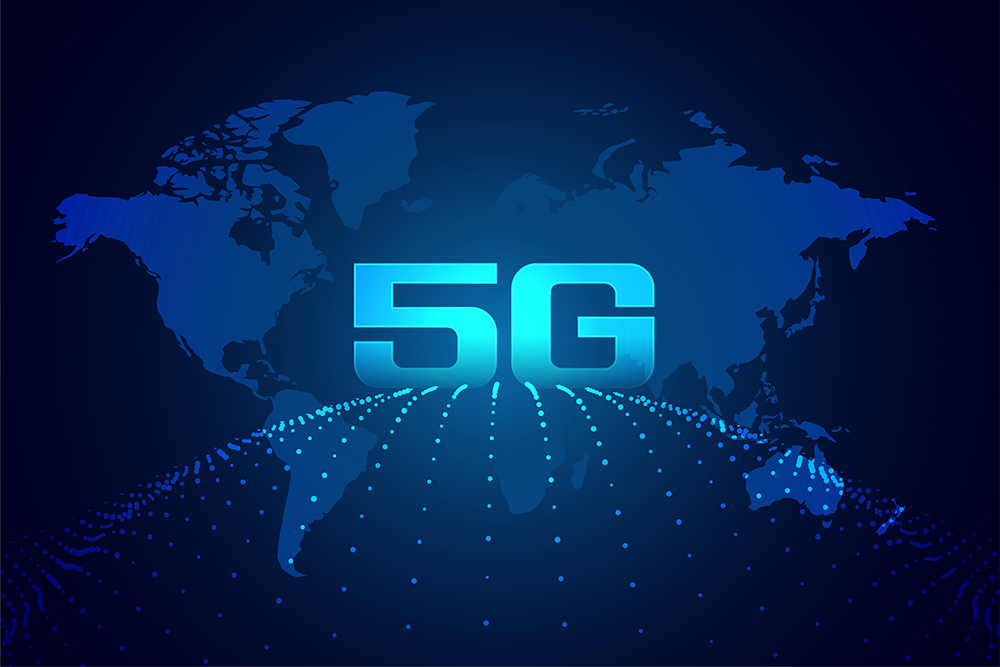As 5G technology continues to grow and expand at a rapid pace, consumers and businesses worldwide have every right to be excited about its endless possibilities. Released in 2018, 5G will represent 57% of the total mobile connections in 2030 in Latin America. Also according to the same report by the telecom association GSMA, the new global wireless standard in mobile networks will reach penetration percentages in the double digits in Brazil, Mexico, Argentina, Uruguay and Chile by 2025.
That rapid advance will set the groundwork for a disruptive revolution in many different industries, including the mobile apps market — an ever-evolving segment expected to generate a whopping U$935 billion in revenue in 2024. But what makes 5G technology so special and how will it provide such a terrific opportunity for developers and businesses?
A look into the 5G technology evolution
It’s hard to picture everyday life without 5G’s predecessor, released in late 2009 as (you guessed it) 4G. That was the network breakthrough that made the current-day smartphone possible. It forever shifted how society views the mobile phone by transforming it from a purely communications device into a hub of endless possibilities. Whether it was helping you get from A to B in a shared ride, ordering food from your favorite restaurant, learning languages, consuming news, or connecting with childhood friends, the smartphone became instrumental to, putting it plainly, how we live in this day and age.
Now, we head to the next boost. Here are some key trends 5G is set to bring to the table when mobile apps are completely designed around its perks and benefits, such as much higher data speeds, ultra-low latency, and enhanced reliability and network capacity, resulting in more immersive and efficient experiences, improved performances, and engaging cloud computing and gaming.
Unleashing the power of IoT in mobile apps
5G technology offers seamless integration with a wide range of connected devices, finally fully unleashing the power of IoT (Internet of Things). By managing and interacting with smart home appliances, such as cleaning robots, air conditioners, refrigerators, and pet cameras, or health wearables, like smartwatches, biosensors, ECG and blood pressure monitors, 5G is set to unleash the power IoT.
Developers and brands should be salivating at the reality of creating efficient communication with diverse connected devices via thriving and popular mobile apps while using 5G’s optimized power usage and bandwidth. Any company that can provide an IoT-infused mobile app that makes everyday life easier and more pleasant will collect the financial gain of delivering convenience and comfort to users.

AR, VR, and immersive technology
The integration of AR (augmented reality) and VR (virtual reality) technologies has the potential to revolutionize and reshape the mobile app industry. By being able to handle large transfers of data much more smoothly and efficiently than previous technologies, 5G will empower AR and VR apps to deliver an improved user experience.
5G technology is expected to drive the development of immersive AR-based smartphone apps, offering a new dimension to mobile app development. Just imagine the possibilities these apps can help bring to reality, delivering 3D experiences across various sectors such as gaming and manufacturing. Even sporting events and concerts are poised to be positively affected, as venue capacity, ticket prices, and geographic distance could stop being limiting factors as soon as placing a VR goggle and signing up for a membership are all you need to attend that Post Malone show you had on your buckets list for years or finally watching LeBron James play without physically making your way to an NBA arena.
Overcoming hardware limitations
All of these possibilities might leave one asking if their devices are ready for the 5G revolution and if a large sum of money is needed for them to fully enjoy the technology. While a smartphone does need to be ready for 5G, hardware concerns don’t go much further than that. In fact, things can work the other way around.
The ability to transcend hardware limitations is a key boost 5G technology provides to mobile apps. Developers will surely enjoy the freedom to integrate advanced technologies for personalized, real-time interactions supported by cloud services, being able to overcome potential restrictions — all thanks to 5G network’s reliability and energy efficiency, ensuring uninterrupted connectivity to enable companies to leverage constant access for their mobile apps. Expect more functionalities and fewer hurdles.
Cloud-based applications will bypass memory barriers in devices, and even battery life will be positively impacted. Scalability is also a key attribute, with low latency and high transmission rates facilitating quick and efficient file transfers to the cloud, making it simpler to migrate and storage cloud-based technical infrastructure. Video streaming, navigation applications, and UX (user experience) are also set to thrive in 5G-enhanced applications, with decreased load times and enhanced responsiveness.

‘We can build an app for that’
It’s hard to quantify how much mobile apps have changed all of our lives. Yet, this exciting market is headed to yet another boom with the expansion of 5G technology, offering thrilling new possibilities to billions of consumers and a chance for companies to grow their revenue and place themselves as leaders in this revolution.
“There’s an app for that” is a phrase of the past. With 5G technology empowering new creations and possibilities, “we can build an app for that” emerges as a more suited mantra for 2024 and beyond.

